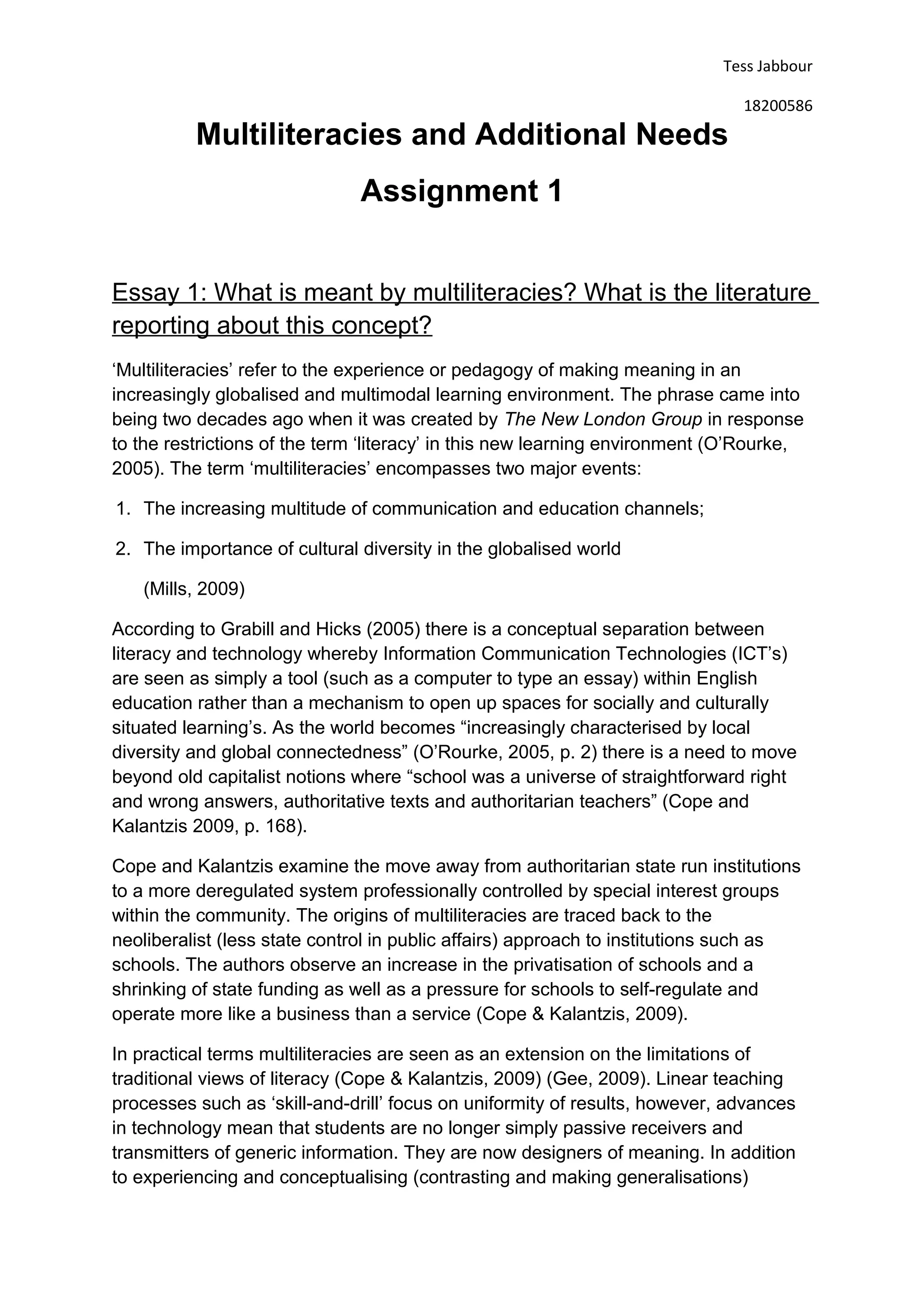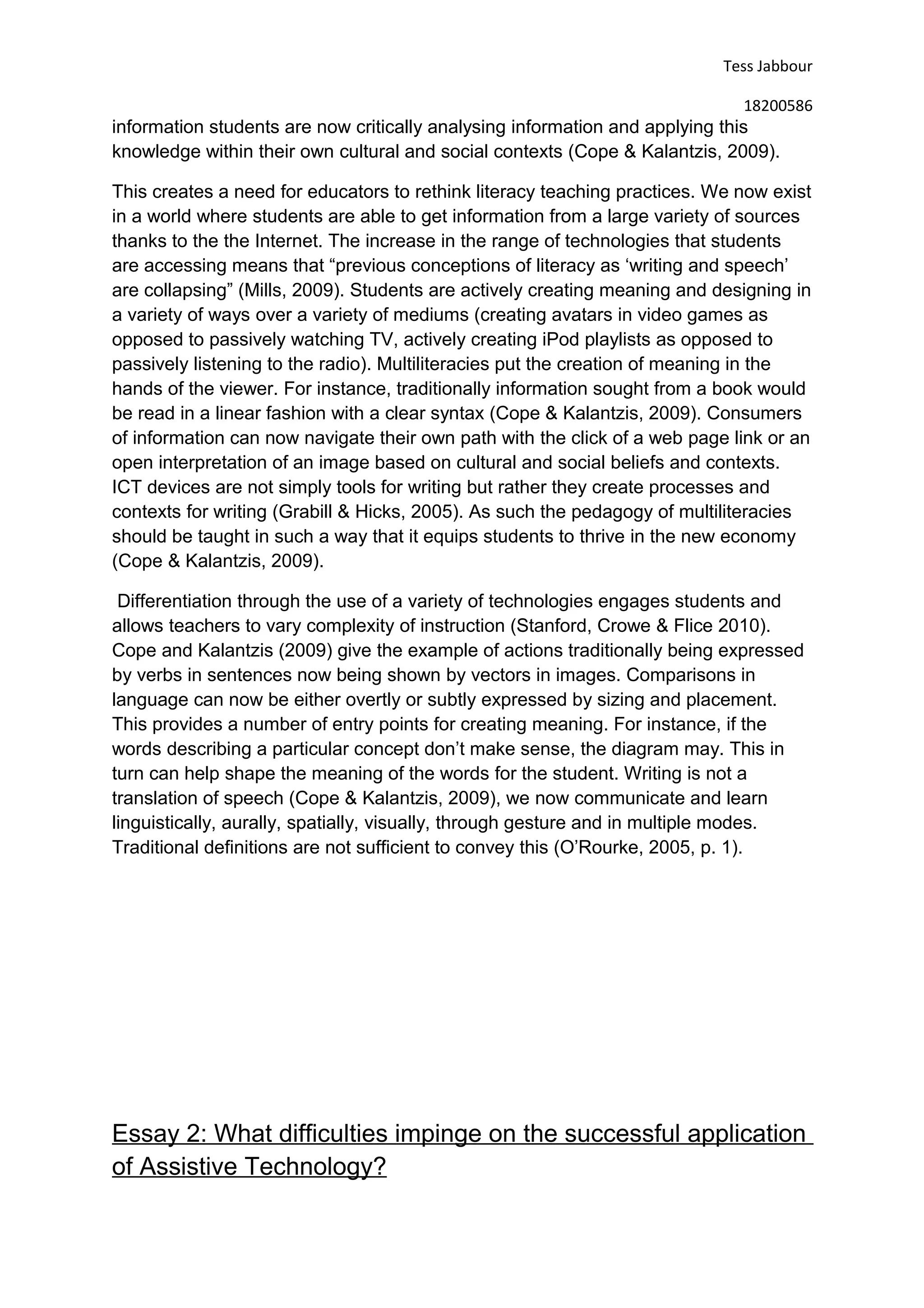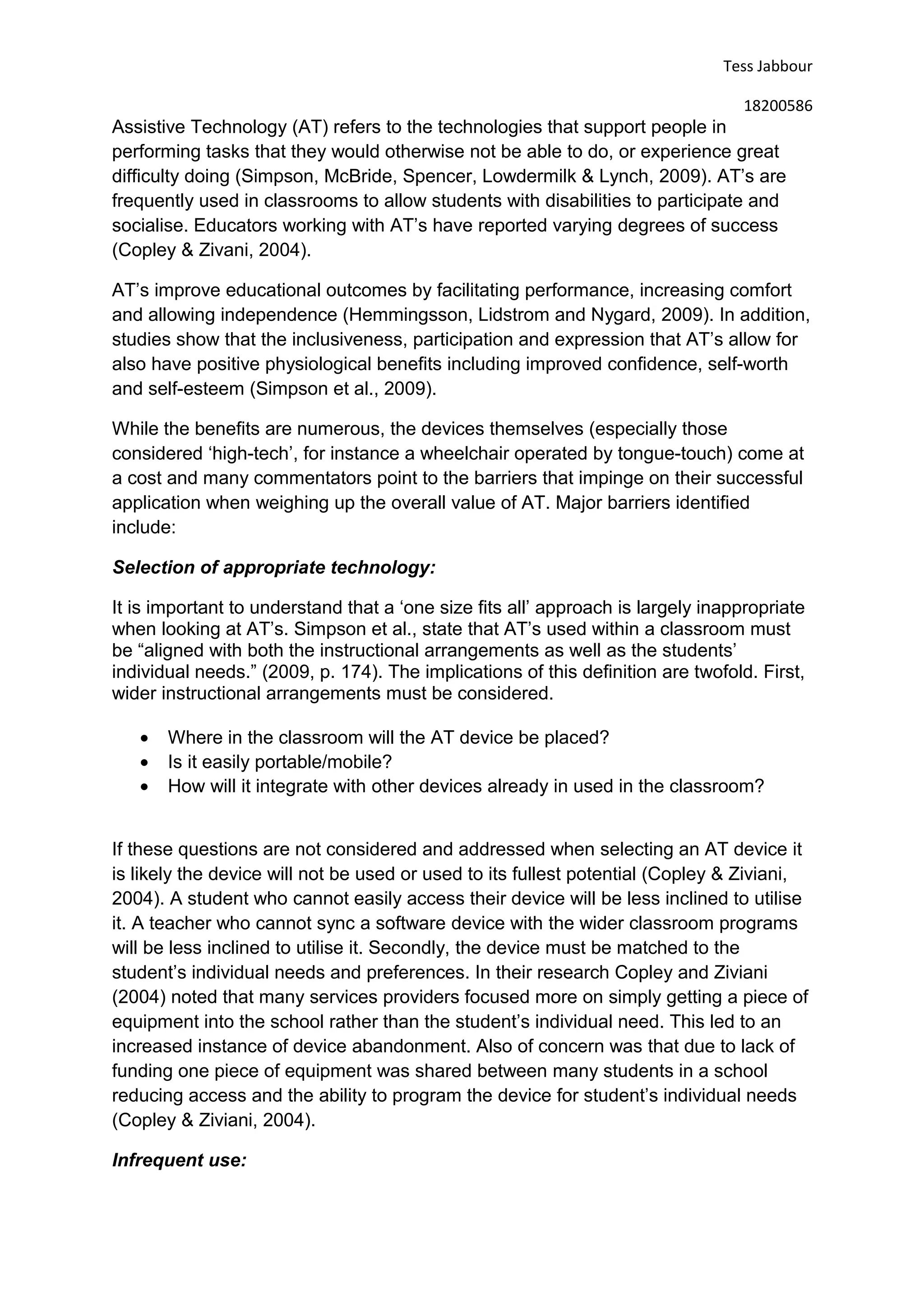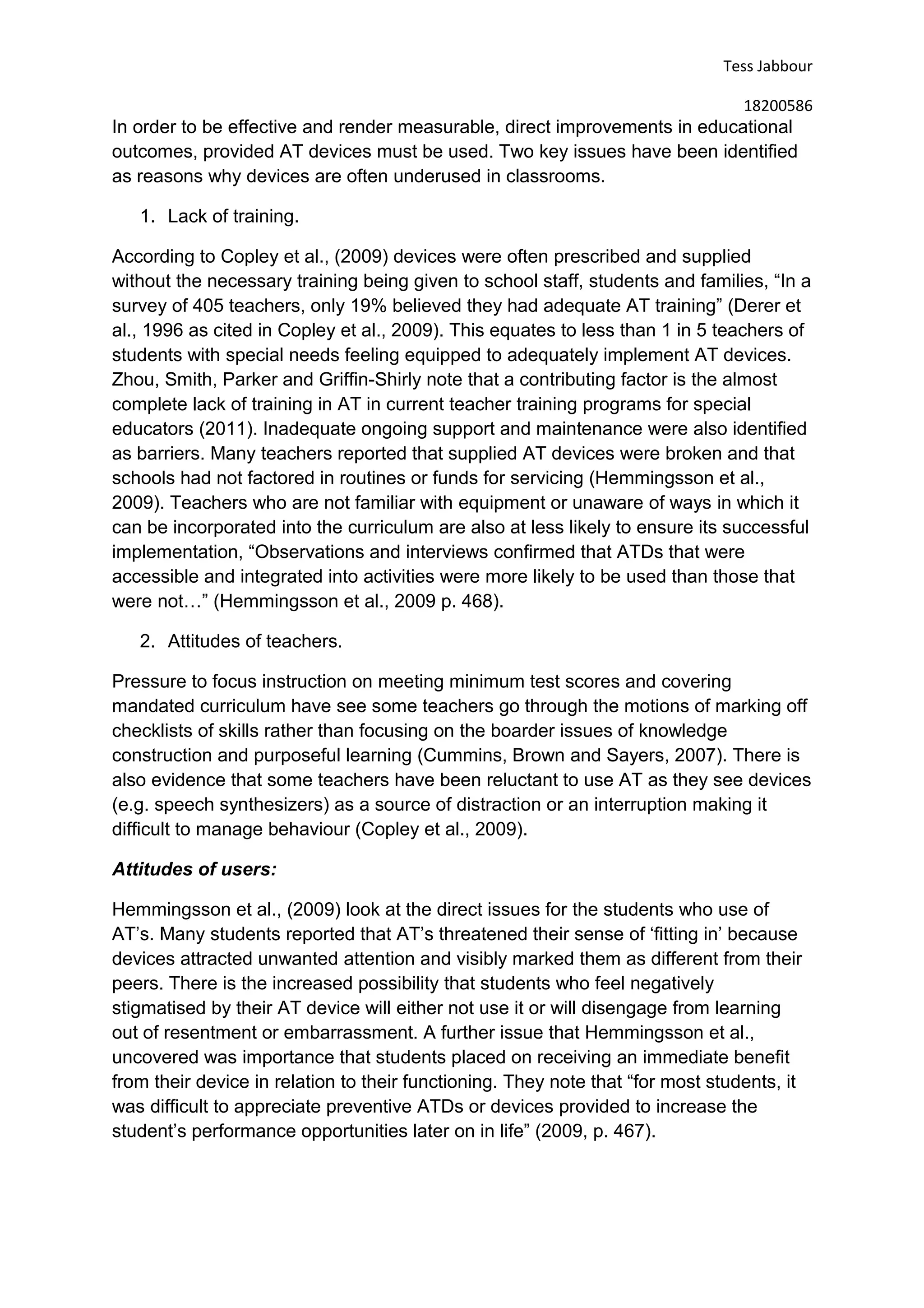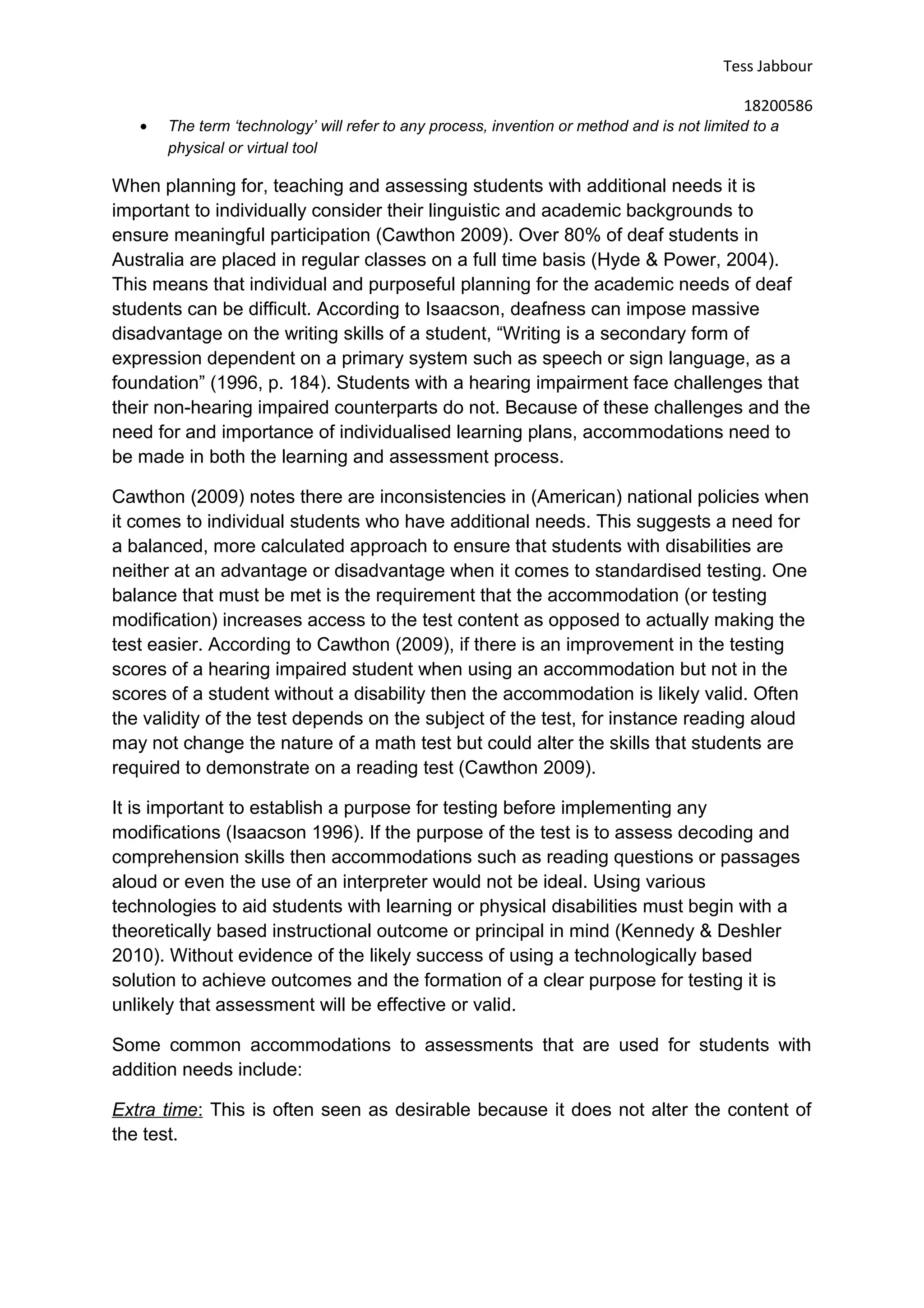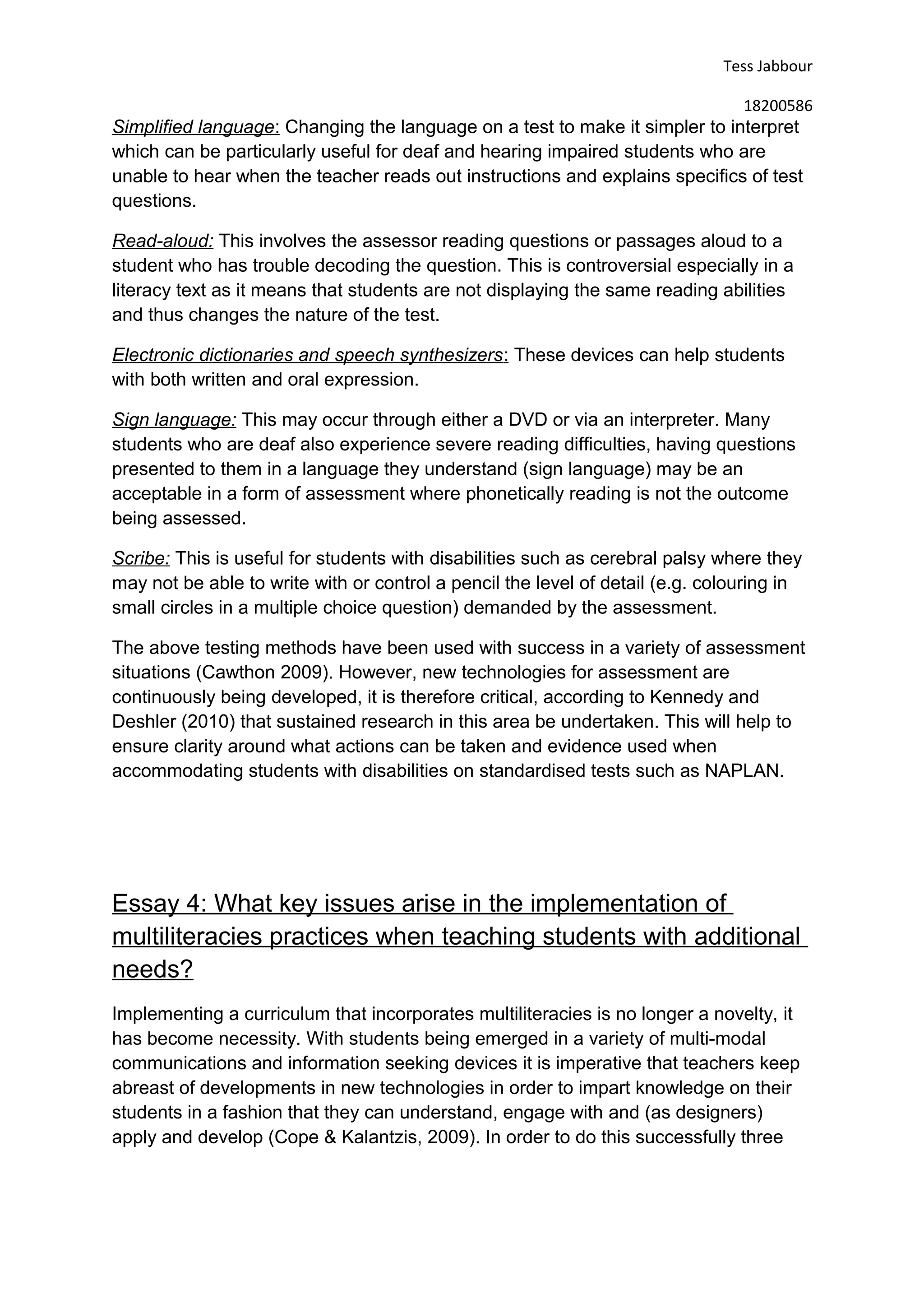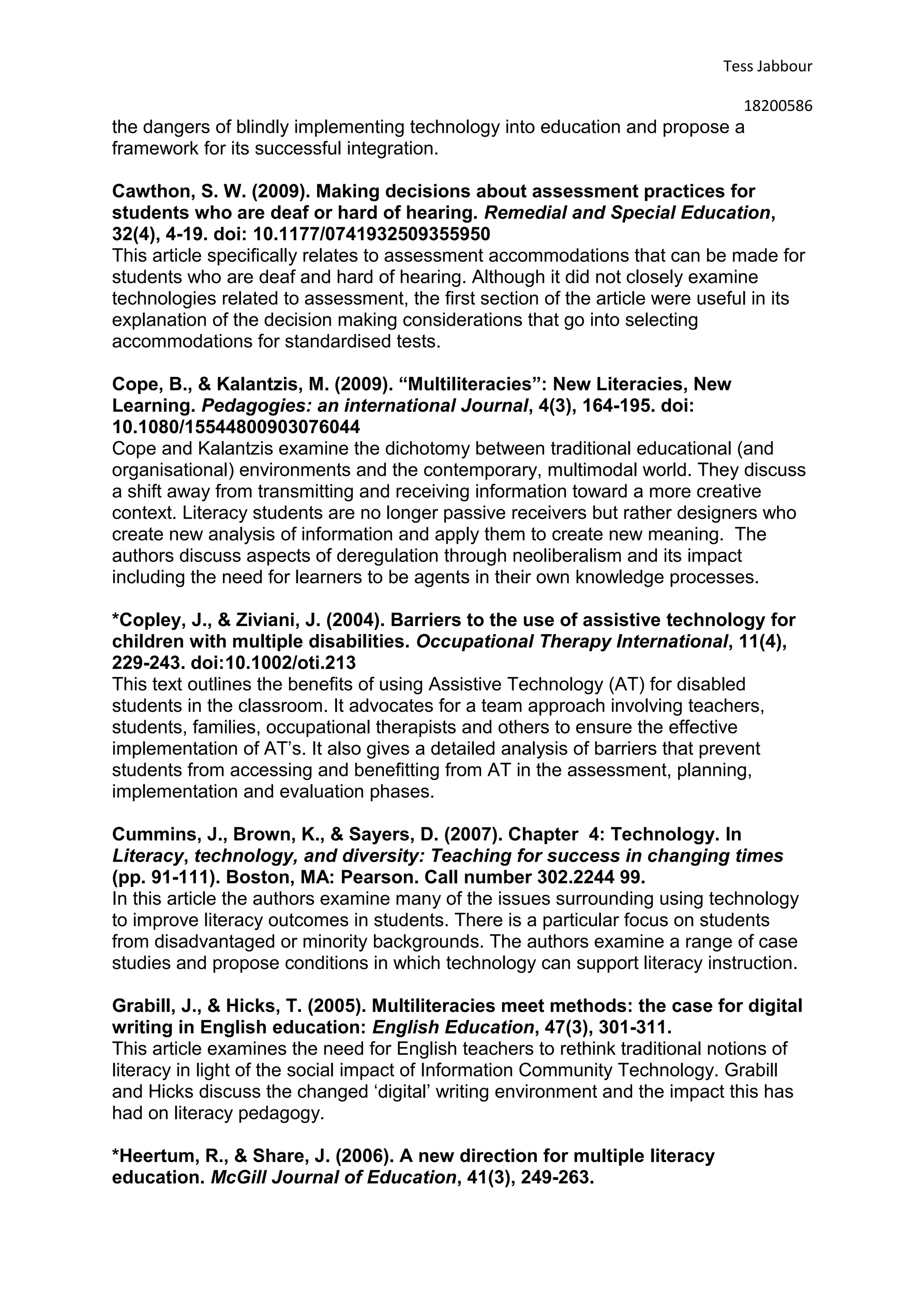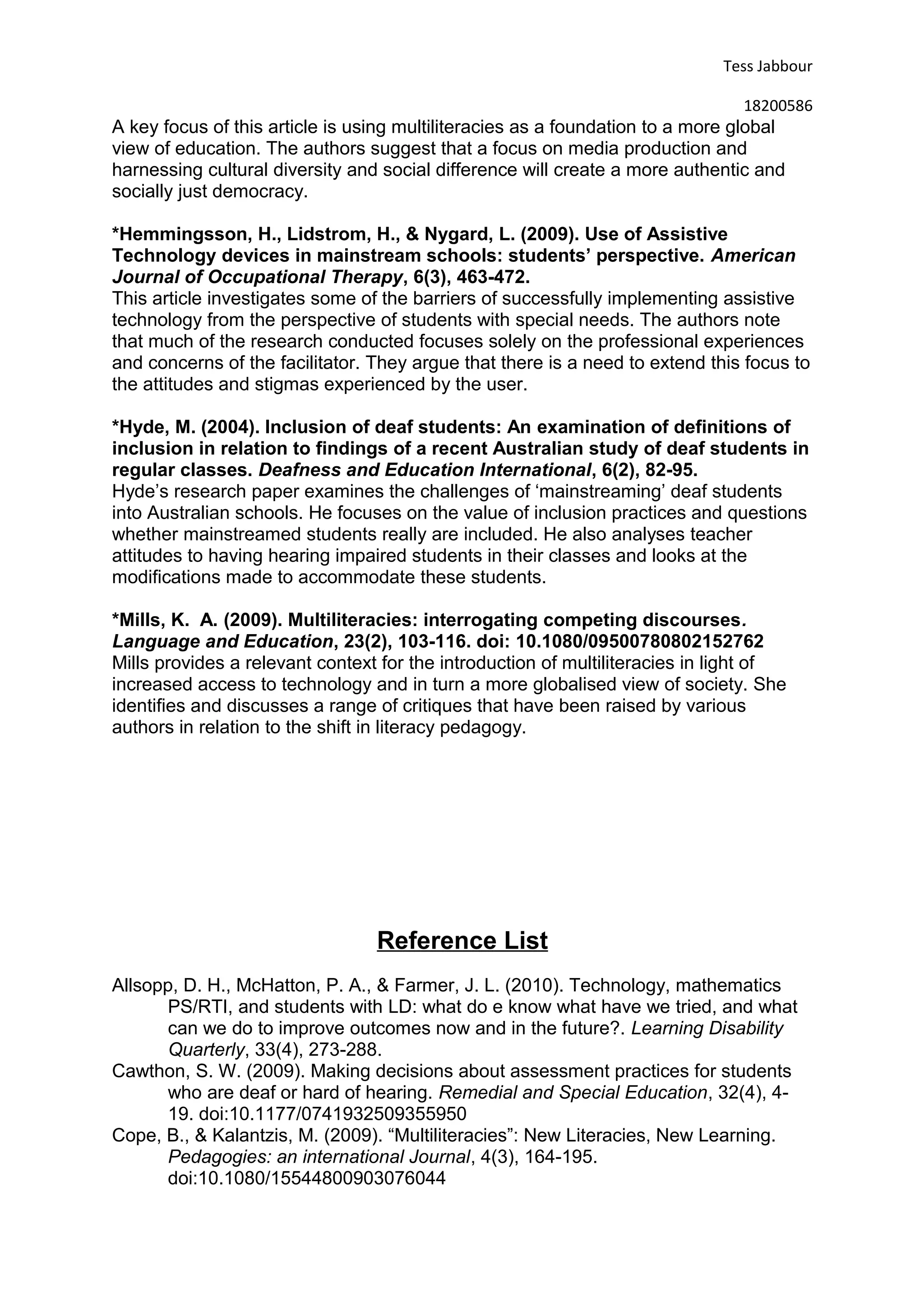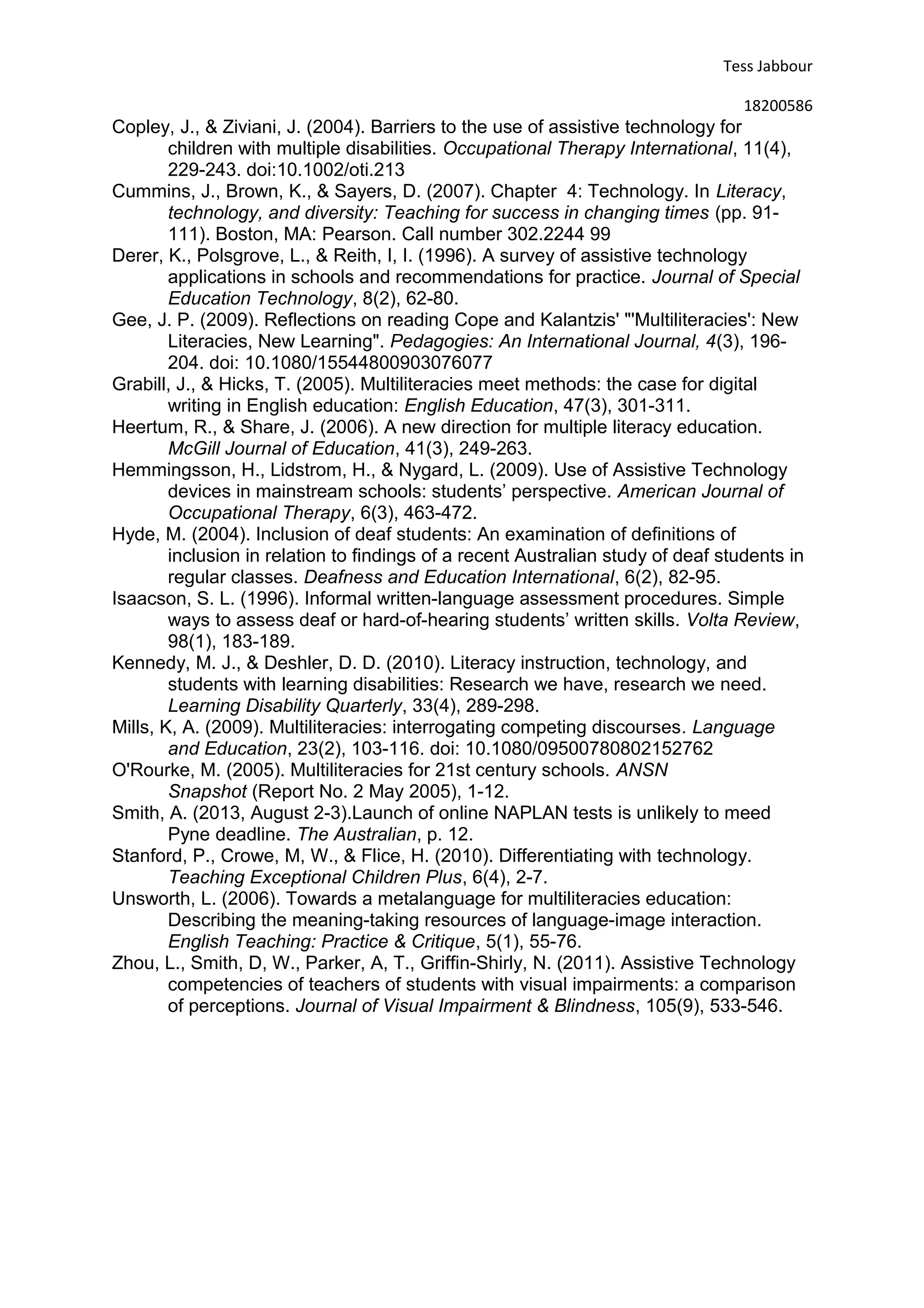- Multiliteracies refers to making meaning in a globalized, multimodal learning environment, encompassing increased communication channels and cultural diversity. It moves beyond traditional literacy to include visual, audio, and spatial modes of meaning-making.
- Successful application of assistive technology (AT) faces difficulties including selecting an appropriate technology that matches both instructional needs and individual student needs, infrequent use due to lack of training for teachers and students, and potential negative attitudes from both teachers and students regarding AT.
